




The Western Balkan region has rich resources and growth potential in terms of sustainability, but leaders must grasp the value of sustainability as a revenue driver in order to boost long-term valuation

SASJA BESLIK Chief Investment Strategy Officer at SDG Impact Japan
Most companies still lack understanding of how to make money on sustainable finance and ESG standards. “Commercial sustainability, a concept I have developed over the last 10 years, targets the financial valuation of companies by using financial material ESG drivers,” explains Sasja Beslik, Chief Investment Strategy Officer at SDG Impact Japan. “This approach enables companies to clearly identify the centre of gravity for their commercial sustainability value.”
Our interlocutor explains that companies usually focus on the conduct side of their business, i.e. the right policies, set of KPIs and reporting, and not on their products and services. However, it is on the product and service side that the rubber meets the road in relation to sustainability as well as value creation for companies. “Current legislation in Europe, like CSRD and SFDR, are driving compliance and
disclosure, which is indeed needed and very good for creating a level playing field. At the same time, it does alter companies’ business models,” says Beslik. “Reporting what is there is not the same as developing new products and services for markets impacted by climate change and energy transition.”
Could you elaborate on how SDG Impact Japan is driving sustainability through its investment strategies?
— SDG Impact Japan is an investment platform in Tokyo that focuses on the sustainable investments. We manage listed and private investment funds targeting mid-cap companies in Japan on the listed side and early-stage private companies developing solutions to tackle global, energy, food and tech transition. We’ve been very successful over the past three years in identifying companies that we believe can scale global solutions – from Agritech to decarbonisation strategies. Our listed investment fund, NextGen ESG Japan, by investing in medium-sized Japanese listed equities, has been outperforming the market and its peers since its inception two and a half years ago. We can see that our approach of using the lens of commercial sustainability helps us identify undervalued companies to invest in and engage with. Performance is a consequence of the decisions we make. Making decisions takes time and demands insight and patience. All our investments have delivered great financial performance and great sustainability related returns, including reduced CO2 emissions, improved human capital management and more robust corporate governance performance.
In your experience, what are the biggest challenges confronting companies and investors in aligning their financial returns with sustainability goals, especially in emerging markets like those of the Balkans?
— In my 30 years as an investment professional on global markets, I have had many arguments over the challenges related to aligning financial and sustainability goals. One of the mayor takeaways is that companies focus too much on an inside-in perspective. This leads to a focus on compliance in relation to their own conduct framework. In short, a company doesn’t make money by being A rated for ESG conduct reporting; it makes money
by serving market segments with products and services.
Sustainability can be an agent of commercial change and not just a theme. Examples like those of the electric vehicle industry are perhaps the most telling. Additional insight is related to the time horizon. The notion of a bird in the hand today being better than two tomorrow remains the dominant narrative in the Balkan region. Creating wealth takes time and demands continuity and focus. The EU is the biggest trading partner for the majority of Balkan countries, and given the recent rather stringent legislative changes, companies in the Balkan region that have the EU as their main export market will simply have no choice but to align. The alternative option, which many companies in the Balkans are still contemplating and which relates to ways to avoid this alignment, would prove very costly. The Balkan region has substantial natural and human resources and great potential to capture growth in the sustainability space. Politicians and business leaders will need to learn how to see the wood for all the trees and to understand commercial sustainability for what it is: a source of revenue that boosts valuation over time.
What role do you envisage for Integrity Capital D.O.O. in terms of promoting sustainable investments in Serbia and the Western Balkans, and how do you plan to leverage your expertise in this region?
— Integrity Capital was founded with the clear vision of addressing the gap in sustainable and impactful investments in this region. I identified a clear need to provide the expertise that me and my partner, Vladimir Rajić, have developed over many years of working in sustainable finance. Our goal is to bring this knowledge to Serbia and the Western Balkans, a region that has significant growth
potential in responsible investment practices.
Integrity Capital is an advisory company that specialises in providing structured and corporate financial advisory services to clients who are looking to prioritise ESG factors in their operations.
I wanted to bring my own experience in the field of sustainable finance to Integrity Capital, offering advisory services that help our clients not only achieve their financial goals, but also contribute to positive societal and environmental outcomes. By leveraging our expertise, we aim to become a leader in promoting sustainable investments in Serbia and the wider Western Balkan region. We believe that this approach is essential to the future success of businesses and the development of a more resilient and responsible economy.
How do you view collaboration between Integrity Capital D.O.O. and local companies influencing the growth of sustainable finance and ESG practices across the Western Balkans?
— The collaboration between Integrity Capital and local companies is a crucial step towards accelerating the growth of sustainable finance and ESG practices in the Western Balkans. Our aim is to create partnerships that not only help businesses adapt to global trends, but also position them as leaders in responsible investing. We believe that local companies are key to driving sustainable change in the region, and through our advisory services we can help them integrate ESG principles into their core business strategies.
We ultimately want to demonstrate that responsible business practices aren’t only beneficial to society and the environment, but are also essential for long-term business success. Through our partnership with local companies, we aim to accelerate the transition to a sustainable economy across the region.
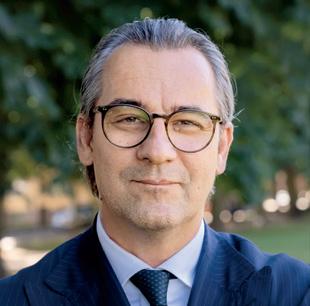
Many companies are today motivated by reputation and perception, but they have limited longterm business value
All our investments have achieved strong financial and sustainability returns, including reduced CO2 emissions, better human capital management and improved corporate governance
Collaboration between Integrity Capital and local companies is a crucial step towards accelerating the growth of sustainable finance and ESG practices across the Western Balkans
We have seen increasing recognition of the importance of aligning PPP projects with the SDGs in Serbia
TONY BONNICI
Chief of the PublicPrivate Partnerships Section at the United Nations Economic Commission for Europe (UNECE)
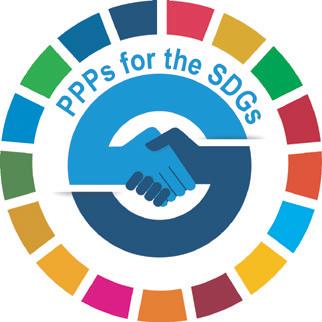
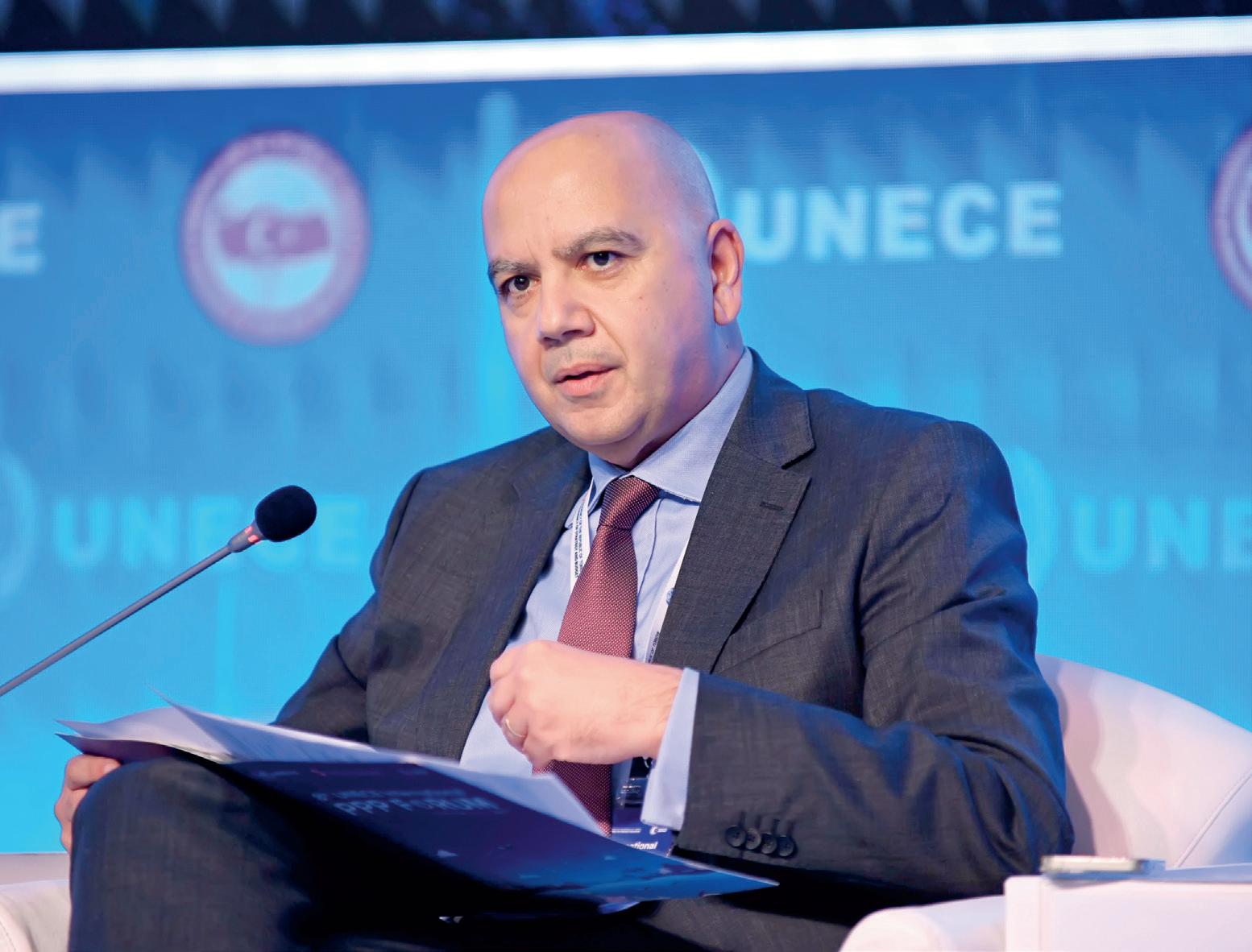
According to UNECE’s Tony Bonnici, what’s required are “PPPs that are ‘fit for purpose’ for the SDGs and that not only create ‘value for money’, but also ‘value for people’ and ‘value for the planet’ in terms of infrastructure and public services”. Speaking in this interview, Bonnici also discusses the UNECE’s mandate, the PIERS methodology and the aligning of projects with the SDGs.
UN Agenda 2030 has set 17 Sustainable Development Goals. What is the significance of PPPs in overcoming challenges to achieve these SDGs?
— Public-Private Partnerships (PPPs) have a central role to play in achieving the 2030 Agenda for Sustainable Development and its 17 SDGs. PPPs can be a mechanism for countries to attract sustainable finance and develop their infrastructure and public services, which are crucial for sustainable development – impacting not just economies, but also communities and the environment.
In order to address this challenge, UNECE developed a new approach to PPPs that ensures they’re “fit for purpose” for the
SDGs and not only create “value for money”, but also “value for people” and “value for the planet” in terms of infrastructure and public services.
When we mention PPP projects, we’re usually referring to large infrastructure projects with a substantial financial value. How can PPPs contribute to achieving the SDGs in smaller municipalities where projects don’t reach a significant financial value?
— The critical path to achieving the SDGs is one that emphasises social infrastructure. And small-scale PPP projects
SMALL-SCALE PPPS CAN PLAY A CRUCIAL ROLE IN ACHIEVING THE SDGS AND CAN HELP SMALLER MUNICIPALITIES WITH LIMITED
provide a critical contribution to achieving the SDGs. Projects should be prioritised in line with sustainable development objectives, aiming for a diverse mix of project scales and not exclusively prioritising large and complex infrastructure projects.
Small-scale PPPs can thus play a crucial role in achieving the SDGs and can help smaller municipalities with limited financial resources. Small-scale projects can have a substantial impact on local communities with broad social, economic and environmental benefits.
How does UNECE evaluate the aligning of projects with the SDGs; and what is your assessment of the harmonisation of PPP projects with the SDGs in Serbia and around the region?
— To ensure the alignment of PPP and infrastructure projects with the SDGs, UNECE has developed the PPP and Infrastructure Evaluation and Rating System (PIERS). The PIERS methodology ensures that projects are sustainable and contribute to the SDGs and the three pillars of sustainability: economic, social and environmental. This methodology can help governments demonstrate that their infrastructure projects score high in terms of ESG principles, which represent an increasingly critical requirement from creditors and investors. The PIERS sustainability methodology ensures that PPP and infrastructure projects create “value for people” and “value for the planet”, with a focus on the world’s most vulnerable populations.
We have seen increasing recognition of the importance of aligning PPP projects with the SDGs in Serbia and the broader region. While progress is being made, challenges remain, particularly in building the capacities of the public sector to promote SDG-aligned projects, especially in developing countries. In this regard, UNECE continues to work closely with governments in the region to improve the public sector’s capacity to identify, develop and implement both small and large PPP and infrastructure projects that are aligned with the SDGs, particularly in the areas of digital and green infrastructure, climate action and the circular economy.
The annual UNECE International PPP Forums bring together international experts in the PPP field to improve their knowledge and share experiences. What will be the main theme on the agenda of the next Forum?
— The next edition of the UNECE International PPP Forum is scheduled for May 2025. Several key topics will be addressed at the Forum, including Artificial Intelligence, fiscal sustainability and affordability, small-scale PPPs, innovative financing mechanisms, reconstruction and resilience in infrastructure, among other topical issues.
One of the highlights of next year’s Forum will be the “UNECE PPP and infrastructure award 2025”, in which PPP and infrastructure projects that showcase SDG-compliant design, construction and operation elements will compete. A number of projects will be selected by an international jury, with a strong emphasis on their contribution to green and digital characteristics.
JELENA TADIĆ Executive Director, PPP Investment
The City of Belgrade applied the PIERS Methodology in the PPP project to entrust the part of the city’s public urban passenger transport
We sat down with PPP Investment’s Executive Director Jelena Tadić to discuss PPP projects in Serbia and the region, new experiences, methodological approaches and other interesting topics.
Could you tell us where Serbia stands in the global context of PPP projects?
— Serbia has established a positive trend in the implementation of the PPP model, with projects that serve as a replicable model for the other countries of the region. As someone who collaborates with UNECE, I would like to emphasise the fact that Serbia applies methodological approaches in the area of PPP that have been developed by UNECE.

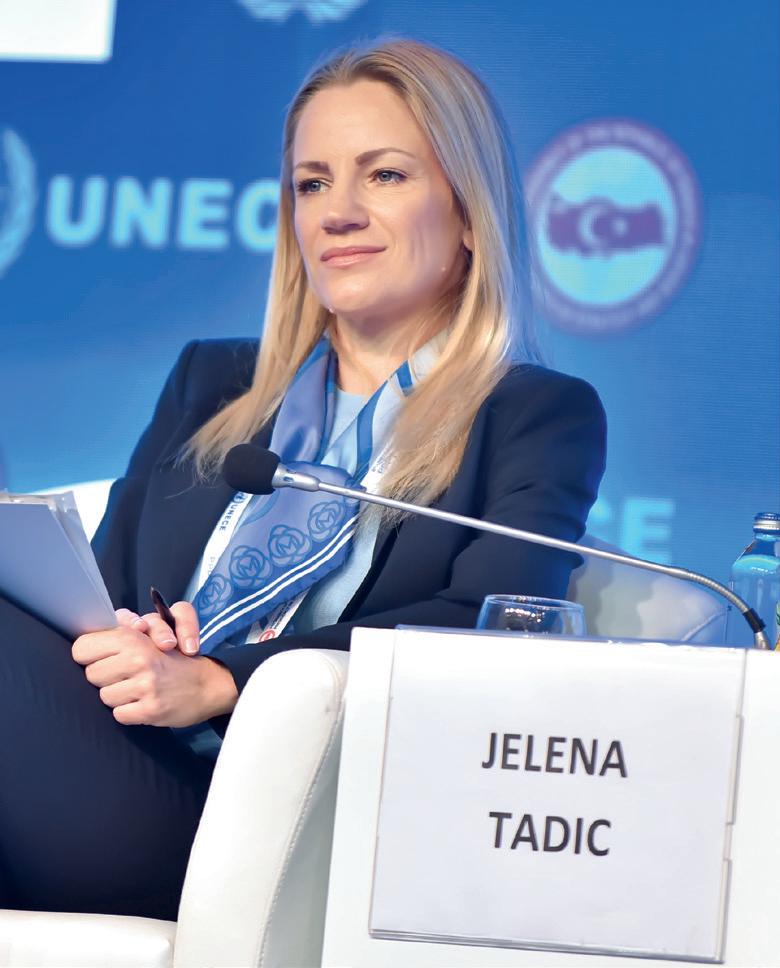

As an international evaluator of PPP infrastructure projects, appointed by UNECE under the PIERS Methodology, I am proud that we have introduced the practice of applying the PIERS Methodology to PPP projects, and that this is becoming accepted by the public sector in Serbia. I would highlight the fact that the City of Belgrade applied the PIERS Methodology in the PPP project to entrust the part of the city’s public urban passenger transport.
What were the prerequisites for Serbia to position itself in the PPP field?
— The preconditions primarily include a strong legislative framework, fiscal stability and the commitment of public bodies to overcome their municipal and other challenges through this approach.
Equally important is the expertise of the professionals who design and implement these projects, as well as our engagement with international organisations like UNECE and WAPPP (World Association of PPP Units and Professionals), through which we continue to enhance our knowledge and experience.
A significant increase in financing, at both the national and international levels, is vital to achieve the Sustainable Development Goals by the 2030 deadline. To this end, the international community must both deliver debt relief to developing countries and expand their access to affordable finance

The just-concluded United Nations Summit of the Future in New York, and next year’s Second World Summit for Social Development, aim to “chart a path toward achieving the Sustainable Development Goals (SDGs) and responding to emerging challenges and opportunities.”
But the question of how to finance the necessary investments – particularly at a time when many countries are weighed down by debt – stalks global discussions.
The world is more complicated than it was a decade ago, when the 2030 Agenda for Sustainable Development, which sets out the 17 SDGs and their 169 targets, was drafted. When the Agenda was approved in January 2016, we had not yet faced the COVID-19 pandemic, war had not engulfed Ukraine or Gaza, and the United States and China were not at loggerheads.
Today, the world economy is more fragmented, geopolitical tensions are higher, and multilateralism is sputtering. Moreover, the number of people living in poverty has increased: in 2020-23, an estimated 165 million people, mostly in developing countries, fell below the World Bank’s poverty line ($3.65 per day at purchasing power parity).
Meanwhile, many countries’ debt burdens have become less manageable, after governments were forced to increase public spending in response to the pandemic and the subsequent cost-of-living crisis. Today, only 27 developing countries – 18% of the total – are not burdened with excessive debt. The rest are struggling with debt overhang, which undermines economic growth and development, and raises the risk of an eventual default. The International Monetary Fund estimates the debt-burden threshold for low-income countries is between 35% and 70% of GDP, after which debt can become unmanageable.
When debt-servicing costs are high, countries often end up making big sacrifices to stay solvent. For example, they might tap foreign-exchange reserves, thereby weakening their ability to respond to future crises, or reallocate resources from critical areas – such as education, health, and social protection – to keep up with their payments. In low-income countries, interest payments are now 2.3 times larger than spending on social assistance, and 1.4 times larger than domestic health expenditures, on average. They amount to 60% of spending on education.
A country that is reducing social spending to service its debts – despite the increase in poverty that will inevitably follow – is unlikely to be able to make long-term investments in sustainable development. And yet, as the UN and other multilateral organizations have made clear, a significant increase in financing, at both the national and international levels, is a prerequisite for achieving the SDGs by the 2030 deadline.
Thus, it is urgent to offer relief to countries that face debt distress. Gov-
ernments should not have to choose between servicing their debts and taking care of their citizens, and today’s debts should not act as a drag on the future. Countries’ ability to manage their debt should be assessed against a broader range of indicators – human, social, and environmental, not just financial. Where debt relief, debt restructuring, or both is in order, it must be implemented quickly and efficiently as part of a comprehensive debt-management strategy, possibly making use of instruments like debt-for-climate swaps, which commit the debtor government to invest the savings from debt relief in climate adaptation or mitigation.
But debt relief alone is not enough. If developing countries are to achieve the SDGs, they will need new sources of funding. So far, multilateral development banks have taken the lead on this front.
As a recent OECD report shows, in 201220, outflows from the World Bank Group increased by 72%, and outflows from oth-
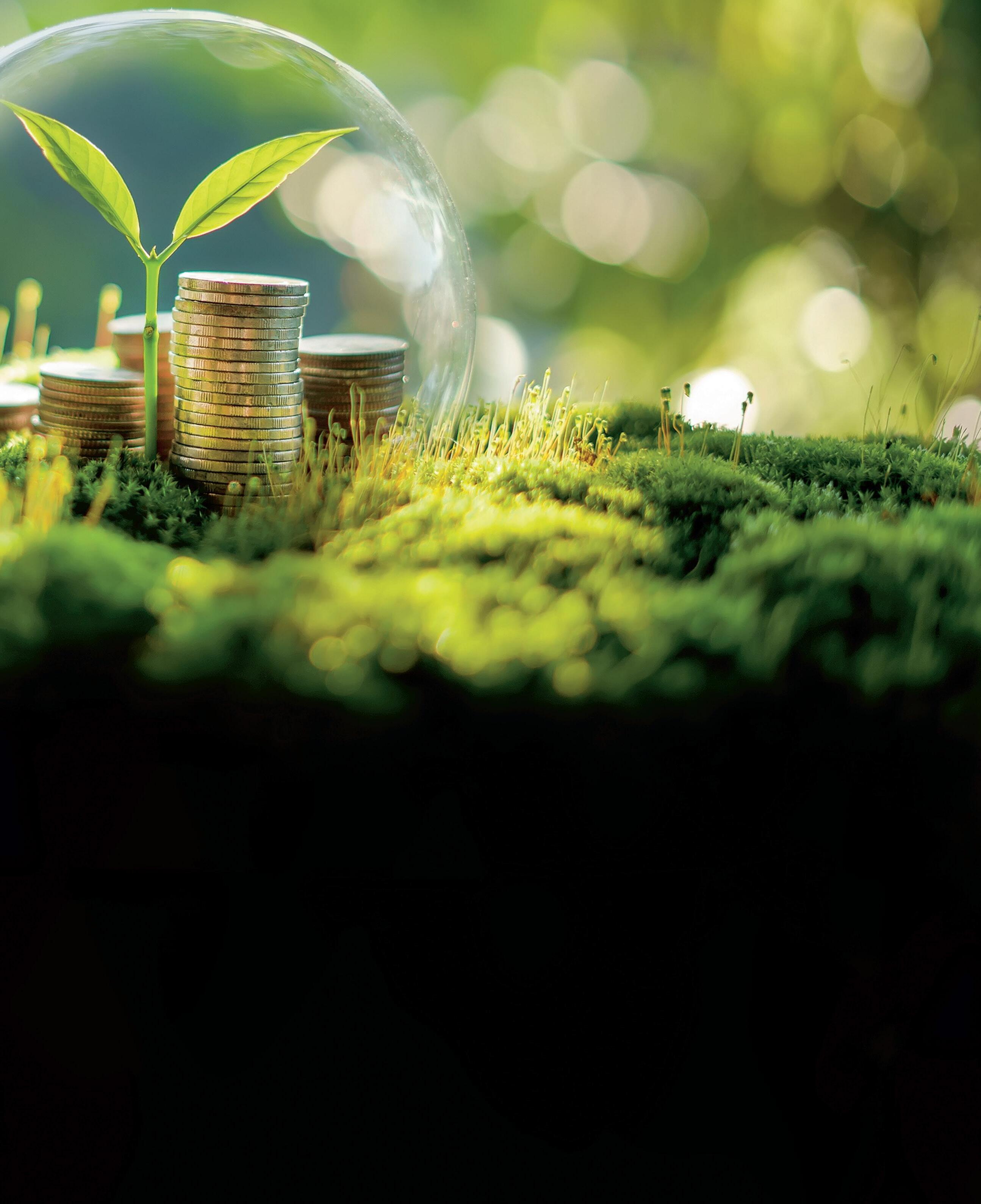
AS THE UN AND OTHER MULTILATERAL ORGANIZATIONS
HAVE MADE CLEAR, A SIGNIFICANT INCREASE IN FINANCING, AT BOTH THE NATIONAL AND INTERNATIONAL LEVELS, IS A PREREQUISITE FOR ACHIEVING THE SDGS BY THE 2030 DEADLINE
er MDBs soared by 155%. In 2021-22, total MDB outflows rose by another 22%.
This trend is set to continue. Earlier this year, ten MDBs estimated that they could collectively expand their lending headroom by an additional $300-400 billion over the next decade. But this would mean an increase of just $40 billion more per year – far less than the $260 billion per year that the G20 Independent Expert Group estimates will be needed to meet the SDGs.
To address the sustainable-development imperative, the MDBs will have to persuade their member states to increase their own contributions by amounts proportionate to the scale of the challenges ahead. Other multilateral organizations, such as the UN, as well as non-governmental donors and the private sector, must also ramp up their support.
Multilateral efforts should aim both to tackle existing debt and to expand access to affordable finance in the future, using a variety of instruments, including concessional loans, green and blue bonds, and grants. And policy measures must be coordinated at the international level. Otherwise, we stand little chance of achieving the SDGs by the 2030 deadline, with devastating consequences for people and the planet.
By Paola Subacchi, Professor of Political Economy and incoming Chair in Sovereign Debt and Finance at Sciences Po
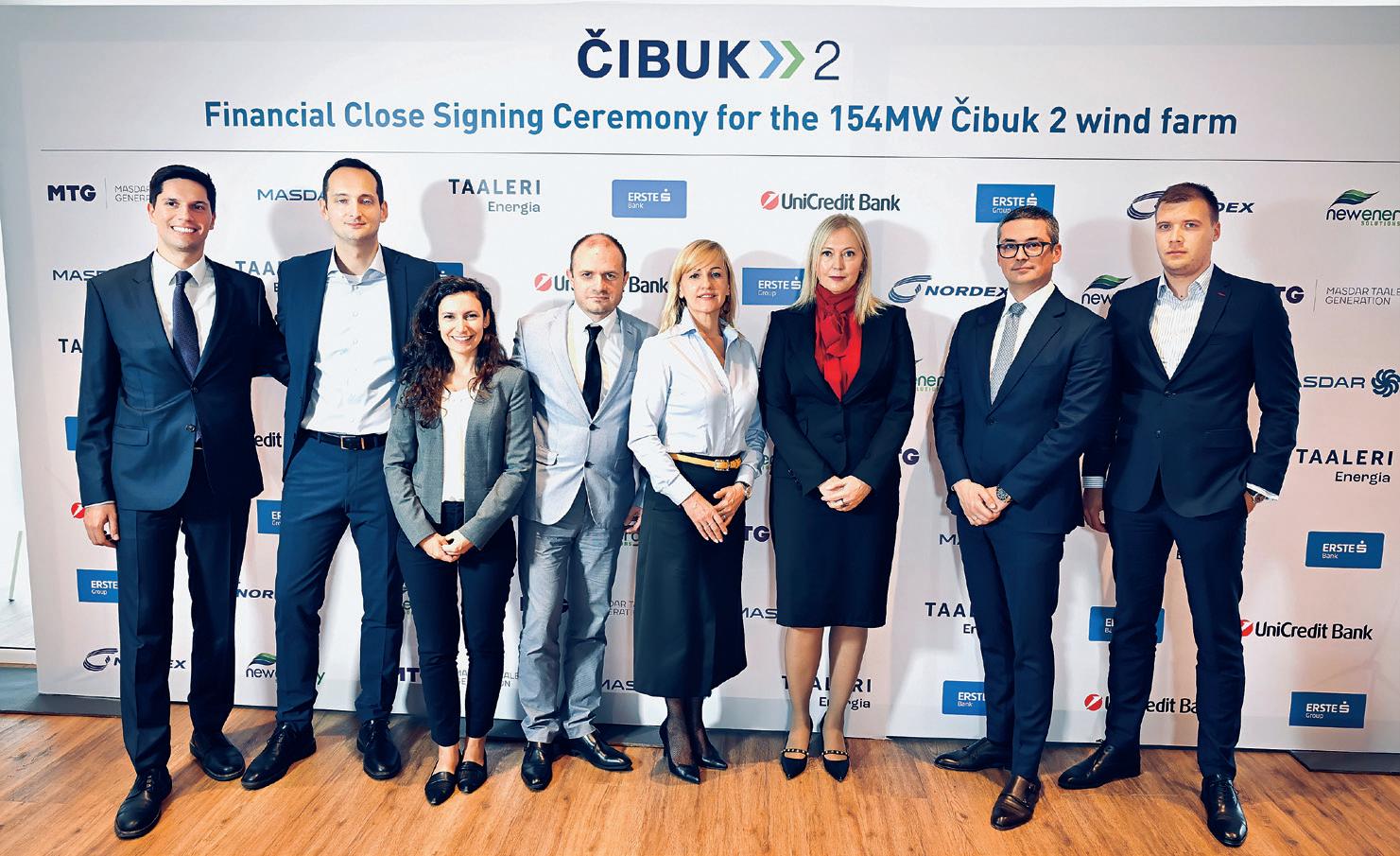
Upon completion, Čibuk 2 will become the largest wind farm operational in Serbia, contributing significantly to the country achieving its renewable energy goals, all thanks to a total investment of €212 million
Erste Bank Serbia and companies Masdar and Taaleri Energia signed an agreement to finance the construction of the Čibuk 2 Wind Farm, which will generate 154 MW of electricity. Located approximately 40 kilometres from Belgrade, in the municipality of Kovin, this wind farm is expected to generate enough electricity to power around 62,000 households and to contribute to reducing CO2 emissions by 311,200 tons annually. Čibuk 2 is scheduled to become fully operational by the first quarter of 2026.
Erste Group and Erste Bank a.d. Novi Sad are financing the project
farm we are financing in Serbia. We are proud to contribute actively to the green transition and the long-term development of sustainable energy sources in the country, in line with the sustainability strategy of our banking group. For us, every new green project is not only a business success, but also an opportunity to contribute to a better future for all of us, as well as for future generations,” said Erste Bank Serbia Executive Board member Nikola Stamenković.
“At Erste Group, we’re proud to have collaborated with our colleagues at Erste Bank Serbia to provide Masdar and Taaleri Energia with the financing for the Čibuk 2 Wind Farm. Erste has a strong track record in financing wind farms and other renewable energy projects in Southeast Europe, playing a key role in helping the region advance in its green transition,” said Erste Group Head of Corporate Finance Wolfgang Hargassner.
For Serbia, this investment is one of the largest renewable energy projects, representing an important step towards achieving the state’s goal of having 41% of its electricity generated from renewables by 2030.
through a partnership with UAE’s Masdar and Finland’s Taaleri Energia, in cooperation with New Energy Solutions, a leading development company in Serbia. The total investment is estimated at approximately €212 million, of which around €144 million has been secured through loans. Erste is financing half of the loan, with Erste Bank Serbia contributing over €47 million, while the remainder is being financed by Erste Group.
“This project is of great importance to us, not only because it represents our largest single green investment to date, but also because Čibuk 2 is already the sixth wind
Čibuk 2 follows the existing Čibuk 1 Wind Farm, which already produces enough electricity to supply around 113,000 households. Once completed, Čibuk 2 will become the largest wind farm operational in Serbia, contributing significantly to reducing CO2 emissions and improving Serbia’s energy stability.
With investments in over 70 green projects to date, Erste Bank Serbia has provided a substantial contribution to reducing harmful emissions and increasing electricity production from renewable sources, thus having a positive impact on local communities and households. Erste Group will continue supporting projects in the renewable energy sector – not only in Serbia, but across the region.